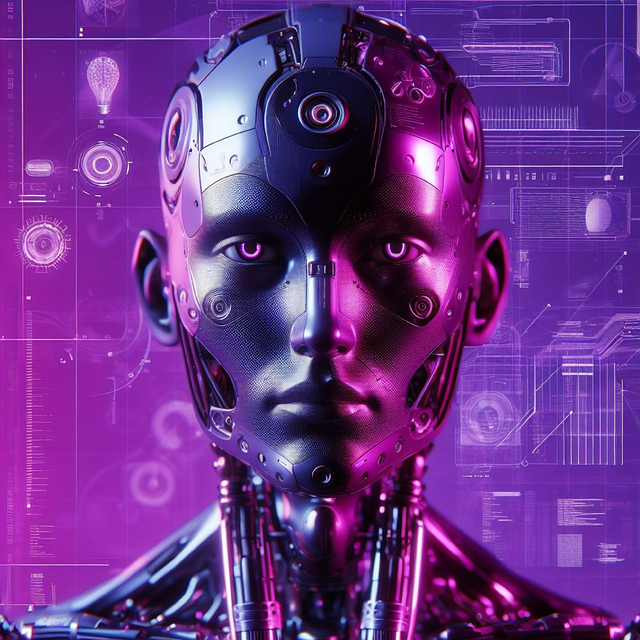AI chatbots have become popular due to natural language processing (NLP) technology, allowing developers to create custom bots using free platforms like Dialogflow or IBM Watson Assistant for beginners. These tools offer intuitive interfaces, strong NLP, and easy integration, with more specialized options available as the chatbot advances. Designing conversations involves structuring topics and user intents, while training models with large datasets improves performance. Deploying chatbots on suitable platforms enhances user engagement, and continuous improvement through feedback ensures accuracy and relevance. Using free AI chatbot resources can significantly benefit various domains.
Creating your own AI Chatbot is an exciting way to bring intelligent, personalized interactions to users. This comprehensive guide walks you through each step, from understanding the fundamentals of AI chatbots to deployment and continuous improvement. Learn how to choose the right tools for development, design engaging conversational flows, train and fine-tune models, and deploy your free AI chatbot with confidence.
- Understanding AI Chatbot Basics
- Choosing the Right Tools for Development
- Designing Conversational Flows
- Training and Fine-tuning Your Model
- Deployment and Continuous Improvement
Understanding AI Chatbot Basics

AI chatbots have become increasingly popular, offering users a convenient and interactive way to access information and services. At their core, these chatbots are powered by artificial intelligence, specifically natural language processing (NLP) technology. Understanding the basics is the first step in creating your own AI chatbot.
A free AI chatbot can be developed using various platforms and tools that provide pre-trained models and user-friendly interfaces. These tools allow developers to customize the chatbot’s behavior and responses based on specific use cases. By leveraging machine learning algorithms, chatbots can learn from user interactions, improving their accuracy and ability to handle complex queries over time.
Choosing the Right Tools for Development

When creating an AI Chatbot, choosing the right tools is a critical step that can make or break your project’s success. There are numerous platforms and frameworks available, ranging from free to paid options, each with its own strengths and weaknesses. For beginners, opting for a user-friendly, free platform like Dialogflow (by Google) or IBM Watson Assistant can be an excellent starting point. These tools offer intuitive interfaces, robust natural language processing capabilities, and easy integration with other services.
Additionally, these platforms often come with extensive documentation and community support, making it easier to troubleshoot common issues and learn advanced features. As your chatbot evolves, you might consider exploring more specialized or advanced tools that cater to specific use cases, such as industry-specific applications or those requiring high customization. This transition allows for greater flexibility but also demands a steeper learning curve.
Designing Conversational Flows

Designing Conversational Flows for an AI Chatbot involves creating a structured yet flexible path that mimics natural human conversation. Start by outlining key topics and user intents your chatbot will address, then map out potential user queries and corresponding responses. This process helps in defining the chatbot’s personality and tone, ensuring it provides relevant, helpful, and engaging interactions.
Using free AI chatbot platforms offers a simple yet effective way to get started. These tools often come with pre-built conversational flows and templates, allowing developers to focus on tailoring responses and integrating specific features. By combining intuitive design tools with robust AI capabilities, you can efficiently craft a chatbot that enhances user experiences while streamlining tasks across various domains.
Training and Fine-tuning Your Model

Training and fine-tuning your AI chatbot model is a crucial step in ensuring its effectiveness and accuracy. The process typically involves feeding vast amounts of text data to the machine learning algorithm, allowing it to learn patterns and generate responses. You can leverage free, open-source datasets or create custom datasets tailored to your specific use case.
During fine-tuning, you adjust hyperparameters and retrain the model on a smaller, more focused dataset. This helps the AI chatbot understand nuances, context, and domain-specific terminology, making its interactions more natural and precise. With dedicated training and fine-tuning, your free AI chatbot can deliver enhanced user experiences, providing relevant, contextually appropriate responses that meet diverse conversational needs.
Deployment and Continuous Improvement

Once your AI chatbot is developed, deployment is a crucial step in bringing it to life and making it accessible to users. Many platforms offer free ai chatbot options, allowing developers to easily integrate conversational AI into websites, apps, or messaging services. This accessibility enables businesses to enhance customer engagement and support without incurring significant costs.
Continuous improvement is essential for any successful AI chatbot. Regularly collect user feedback, analyze conversation logs, and update the model with new data to refine its responses and improve accuracy. By iteratively refining your AI chatbot, you can ensure it stays relevant, engaging, and aligned with user needs over time.
Creating an AI chatbot is no longer a complex labyrinth, but a manageable process that anyone can navigate. By understanding the basics, choosing the right tools, designing intuitive conversational flows, training your model effectively, and continuously improving deployment, you can build a functional and engaging free AI chatbot in no time. Embrace this exciting opportunity to revolutionize customer service, automate tasks, and enhance user experiences with your very own virtual assistant.
